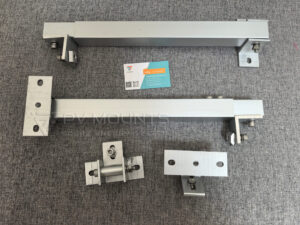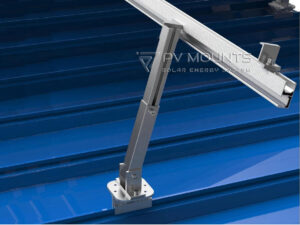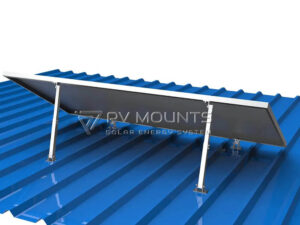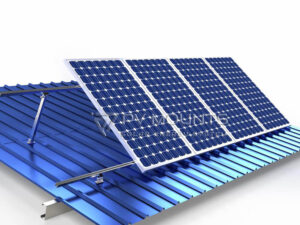Solar carports, an amalgamation of functionality and sustainability, offer a contemporary solution for utilizing open spaces efficiently. These structures, characterized by their integration of photovoltaic panels, are designed to capture solar energy while providing shelter for vehicles. Unlike traditional carports, solar variants elevate the utility of parking spaces by generating renewable energy. This project helps reduce carbon emissions and foster environmental stewardship. In this article we will discuss the solar carport installation and benefits.
The benefits of solar carports extend beyond environmental contributions; they represent a smart investment in renewable technology. Economically, they can provide a steady stream of energy, potentially reducing utility costs and increasing the value of the property. Aesthetically, they contribute to modernizing the infrastructure, aligning with eco-friendly architectural trends.
Planning Your Solar Carport Installation
The initial phase of installing a solar carport involves meticulous planning and assessment. Site evaluation is paramount, as it dictates the feasibility of installation, taking into account factors such as orientation, shading, and available space. This stage is crucial for maximizing solar energy capture and ensuring the structural viability of the carport.
When planning the solar carport installation, you must consider legal factors. Navigating the complexities of zoning laws, building codes, and permit requirements is essential for legal compliance and project viability. Early engagement with local authorities can facilitate a smoother process, mitigating potential legal hurdles and expediting project timelines.
Design Considerations for Solar Carports
The design phase of a solar carport is multifaceted, involving structural, aesthetic, and solar performance considerations. The structural design must not only support the weight of the solar panels but also withstand local environmental conditions, such as wind, rain, and snow. The selection of solar panels and their configuration are determined based on the energy needs and the site’s solar potential, ensuring optimal energy production.
Collaboration with solar design experts and engineers can yield a carport that is not only functional but also architecturally appealing. This synergy between form and function is critical in creating a solar carport that complements the existing landscape and meets the energy production goals.
Financial Considerations and Incentives
Investing in a solar carport involves analyzing the cost against the potential energy savings and financial incentives. The investment can be substantial, and long-term benefits often justify the expense. Detailed cost analysis, including equipment, installation, and maintenance expenses, provides a clear picture of the financial outlay.
Government incentives, tax credits, and rebates can significantly offset the initial costs, enhancing the economic feasibility of solar carport projects. Staying informed about these financial incentives and incorporating them into the cost-benefit analysis is crucial for a comprehensive financial plan.
Choosing a Contractor for Installation
The selection of a contractor is a decisive factor in the success of a solar carport installation. A contractor with a track record in solar projects will bring valuable expertise and insights, ensuring the installation adheres to technical and safety standards. Assessing qualifications, experience, and past projects is essential in selecting a contractor who can deliver a high-quality installation.
Engaging with multiple contractors, comparing bids, and checking references are integral steps in the selection process. This due diligence ensures the chosen contractor is well-equipped to handle the specific requirements of the solar carport project.
Preparation for Installation
Before installing a solar carport, it is important to obtain all necessary permits and prepare the construction site. This phase involves coordinating with local authorities to meet regulatory requirements and comply with local standards.
Site preparation is also key, involving tasks such as leveling the ground, ensuring soil stability, and addressing any site-specific challenges. This groundwork is essential for a smooth installation process and the long-term stability of the carport structure.
The Installation Process
The installation of a solar carport is a systematic process that involves constructing the support structure, installing the photovoltaic panels, and integrating the electrical systems. Each step must be executed with precision, following the design specifications and adhering to safety protocols.
Safety is a critical concern during installation, and strict adherence to occupational health and safety standards is required to protect workers and ensure the structural integrity of the carport. The process requires skilled technicians and electricians to ensure that the solar carport is installed correctly and is fully operational.
Post-Installation: Operation and Maintenance
After the solar carport is installed, it enters the operation phase, where it begins to generate and supply electricity. Initial commissioning involves testing and verifying the system’s functionality to ensure it meets the expected performance criteria. Regular maintenance is crucial to sustaining optimal performance, involving routine inspections, cleaning of solar panels, and monitoring system output.
Effective operation and maintenance practices extend the lifespan of the solar carport and maximize the return on investment, ensuring the system continues to provide economic and environmental benefits over its operational life.
Conclusion and Future Outlook
Solar carports represent a significant advancement in the integration of renewable energy into everyday infrastructure. They offer a practical solution to energy generation, providing both protective shelter and sustainable power. As technology evolves and the demand for renewable energy sources increases, solar carports are set to become a staple in urban and residential planning.
The future of solar carports is promising, with advancements in photovoltaic technology and smart energy management systems enhancing their efficiency and integration into the energy grid. As these trends continue, solar carports will play a pivotal role in the transition towards a more sustainable and energy-independent society.













